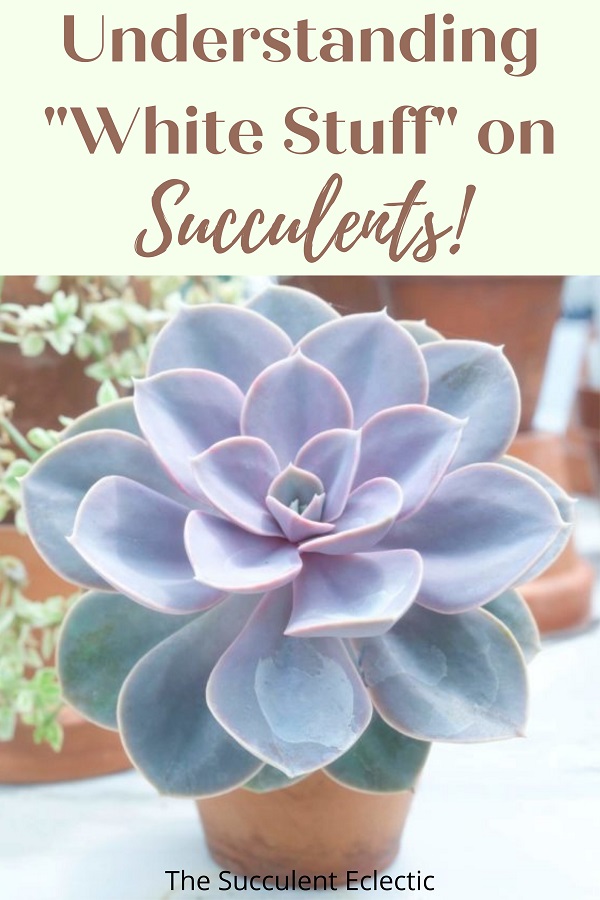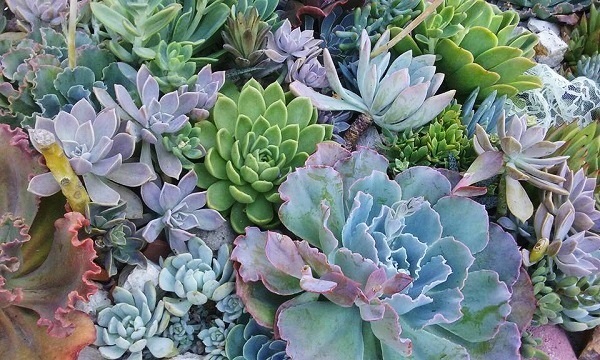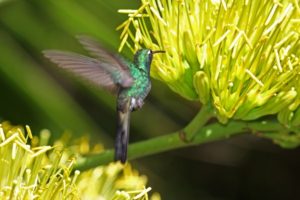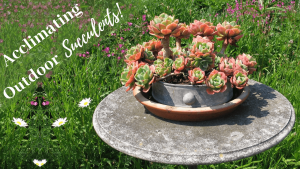“Epicuticular waxEpicuticular wax (Ep-i-cyoo-TI-cyoo-lar wax) is a natural, ...,” “glaucousGlaucous (GLAH-cuss) leaves have the appearance of the whiti... leaves,” and “farina” are unfamiliar terms for a common occurrence in succulents and plants in general. They refer to the whitish, cloudy film or waxy coating you see on a number of succulent leaves and stems. You may have tried to wipe it away, to find it easily wipes clean, but that there was more there than you realized. This is a perfectly natural and healthy development the plant uses for its protection. Because it bears some resemblance to other white substances that are highly damaging, like whiteflies, mealybugs, and powdery mildew, it can be concerning. Let’s take a closer look at what this is all about.
Epicuticular Wax | Glaucous Leaves | FarinaFarina is a term for a very fine flour. Used with succulents... More
In this Post We'll Cover:
{Please note, some links in this post may be affiliate links to sites that pay me a small commission if you click on the link and make a purchase. This commission is at absolutely no cost to you. I only recommend products and companies that I have worked with and truly love! ~Kat}
Epicuticular Wax
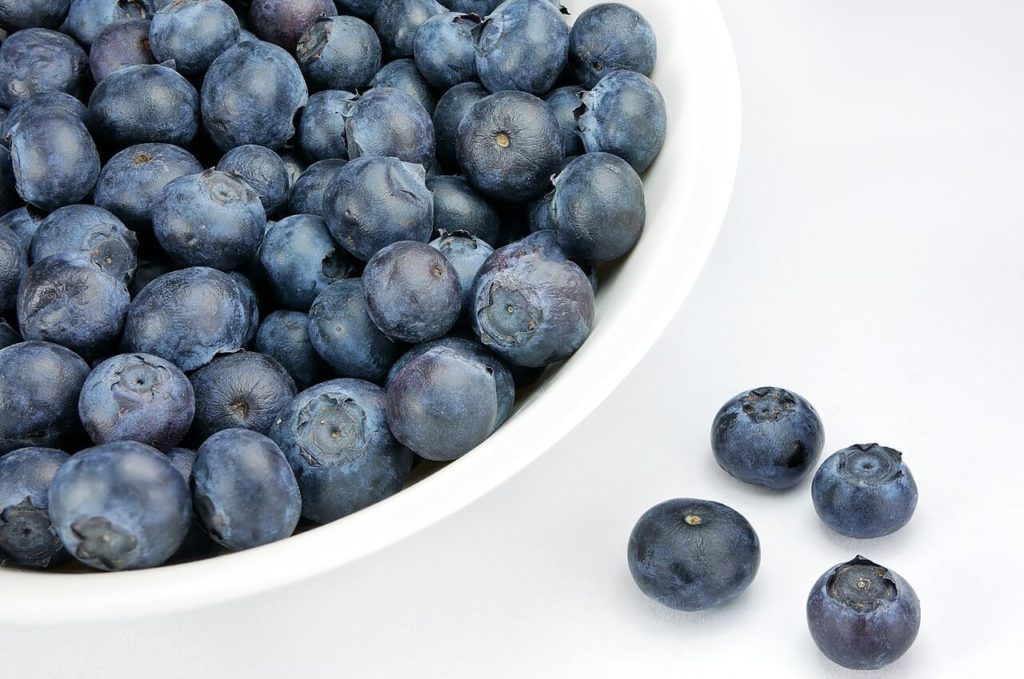
Epicuticular wax is a layer of whitish film on the leaves, stems, and fruits of a wide variety of plants. Among many others, you see it on blueberries, plums, red grapes, apples, kale, and many succulents. It forms on the outer cuticle of the plant’s skin. This wax makes water bead up rather than truly wet the plant. And it tends to cause dirt particles to adhere only loosely to the leaf so that it easily washes away when a water droplet rolls over it. The wax helps to keep the part of the plant that it covers from losing moisture to the air. It also reflects UV radiation, acting essentially as a sunscreen, preventing damage to the plant in the form of sunburn. Finally, it tends to make the surface more difficult for insects to walk upon it or to lay their eggs on it.
Epicuticular Wax on Succulent Leaves
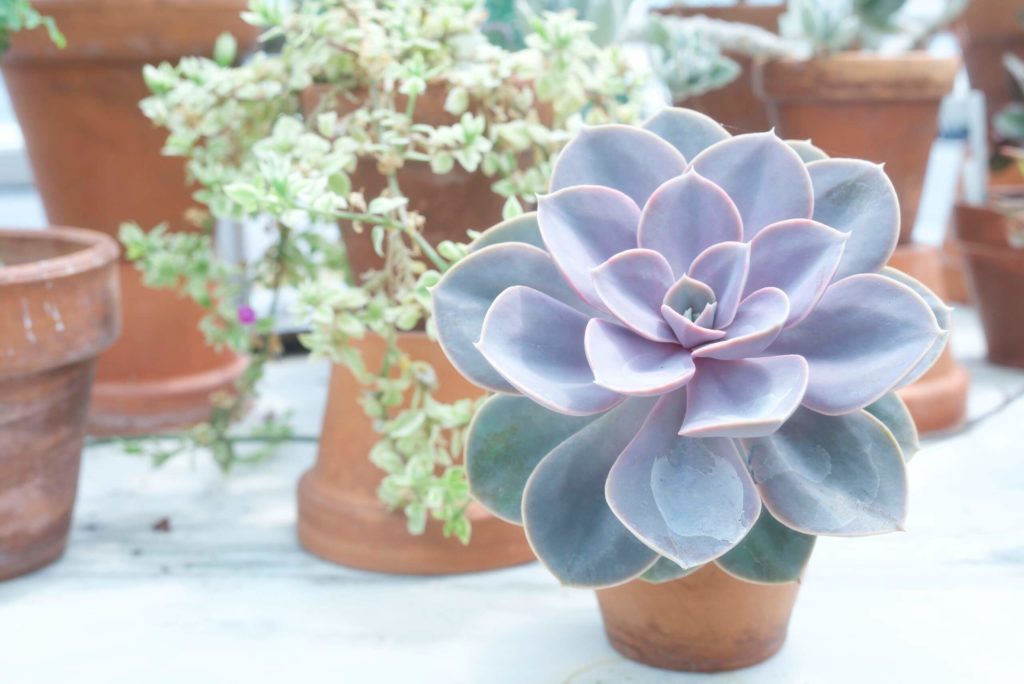
Plants develop epicuticular wax to enable them to thrive in challenging climates. For succulents, this wax helps to maintain their stores of moisture during times of drought. It helps the plant to grow in full sun without damage and to protect it from insect predation. For some plants, like camellias, the epicuticular wax gives the leaves a glossy appearance with a high shine. In succulents, most often, it is a soft, powdery appearance referred to as glaucous. Many succulents are described as having “glaucous leaves.” In botany, glaucous leaves are any that are “covered with a greyish, bluish, or whitish waxy coating or bloom that is easily rubbed off. Most often, the succulents referred to as glaucous are those that have bluish-grey or green leaves with pronounced epicuticular wax.
Succulents with Glaucous Leaves
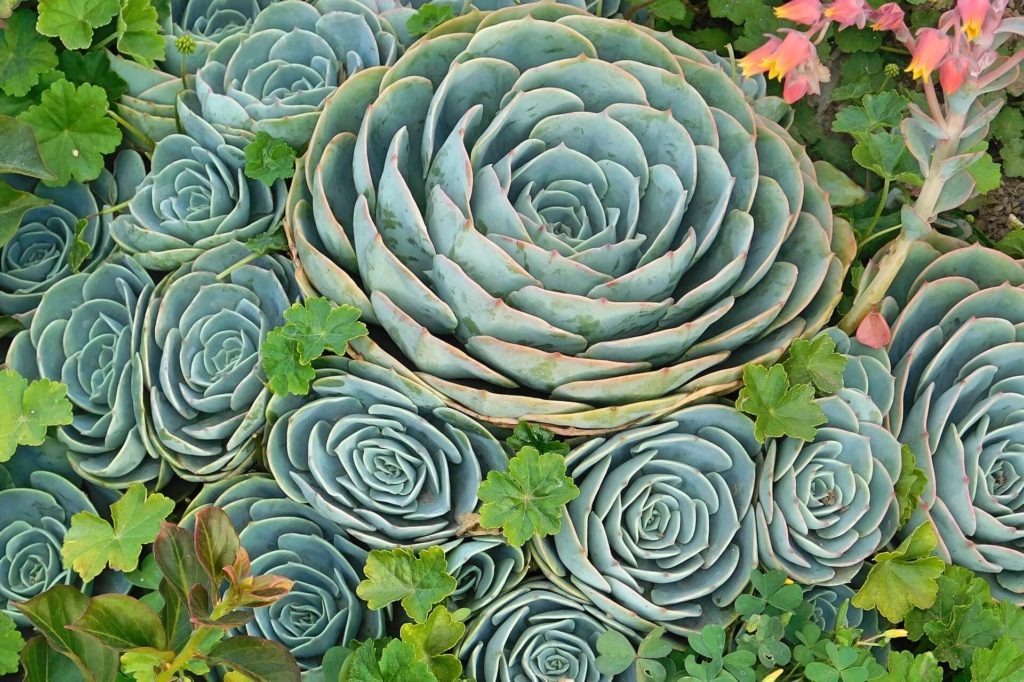
Many varieties of succulents have a pronounced epicuticular wax on the leaves. Ecechervia imbricata, the lovely blue rosette succulent above, may be the best known. You will also see this whitish wax on many, many others. It tends to be so pronounced on kalanchoe thyrsiflora, the flapjacks or paddle plant, that people often seek help for the condition, not realizing it should be there. The white chalky dust can cake up quite a bit on the stems and the lower part of the leaves. This is not a problem, and it should be left in place to continue to do its job.
Don’t Wipe Away the Wax
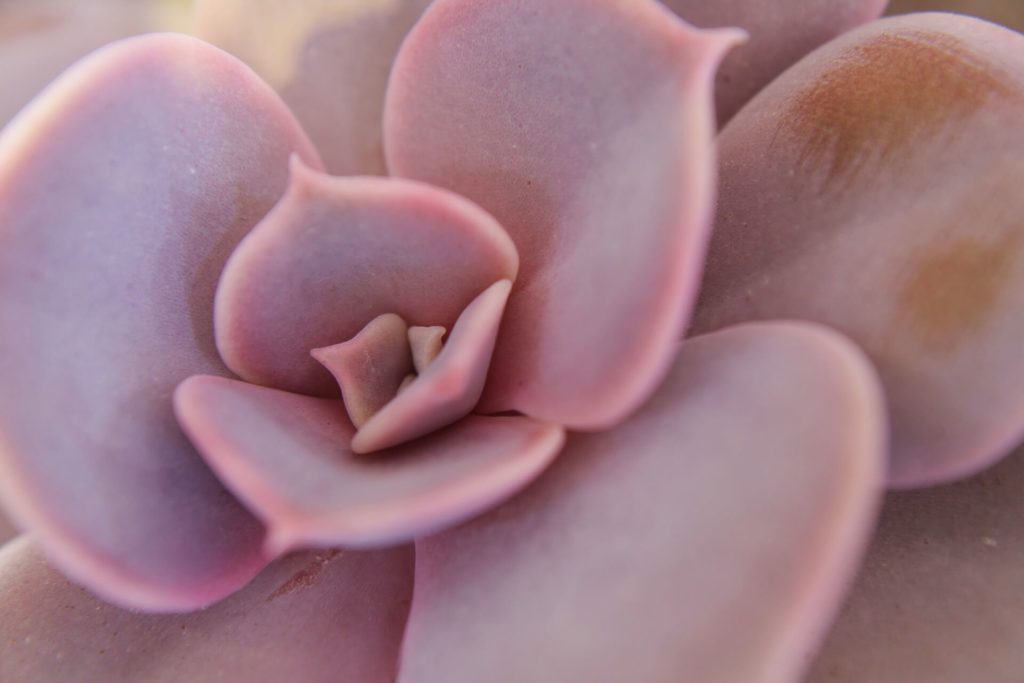
Echeveria lilacina with epicuticular wax
Because epicuticular wax provides so many benefits to the plant, it should not be wiped away. Further, it takes a very long time to come back in succulents. The plant tends to look a bit patchy where the wax has been removed and will remain so for months. Choose instead to see the beauty this natural protective layer imparts to your plants. It produces an almost ethereal quality to the color, doesn’t it? Use an inexpensive paint brush with soft bristles to remove soil from your succulents or to brush away dust.
Recognizing Epicuticular Wax – Farina
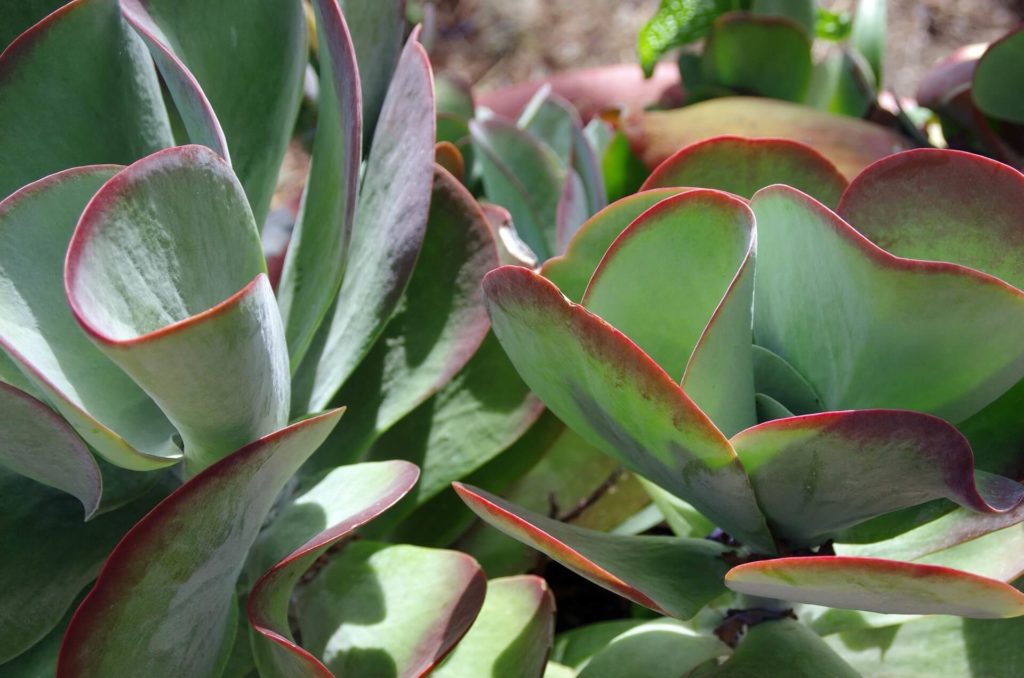
Recognizing epicuticular wax and discerning the difference between it and a pathogen or infestation lies in its purpose. This wax serves as a sunscreen, a protection against water loss and against insects. So clearly, it will need an even “application,” right? In fact, the term “farina” (often used a bit inaccurately as a synonym for this type of wax) refers to an even dusting of very fine powder. Once you know this waxy powder is supposed to be there, you will note how evenly it covers the plant. It develops on the underside as well as the top of the leaf and equally on every leaf of the plant. And if there are locations of heavier accumulation, they occur in a very gradual fashion that appears intentional. This is an important look to recognize, as the appearance of powdery mildew and of whiteflies lacks this. Also, since this wax protects the health of the plant, make note of the condition of the leaves. Healthy, happy leaves with a very fine, very even dusting of powder that covers the entire plant is a good description of the look of epicuticular wax.
MaryCarol Chapman, a wonderful member of my Facebook groups for succulent-lovers (you should join us!), has a fantastic suggestion I have adopted for succulent care that is perfect for identifying issues of white stuff on your succulents. As she suggested, I now include a jeweler’s loupe in my bag of succulent tools. The loupe lets me get a really good look at any white stuff, so I can better see what it is made up of. If I see little legs, I know it is an insect and must be addressed (see below). It gives me a chance to better evaluate the fine texture and even application so I can better distinguish epicuticular wax from powdery mildew.
Recognizing Powdery Mildew on Succulents
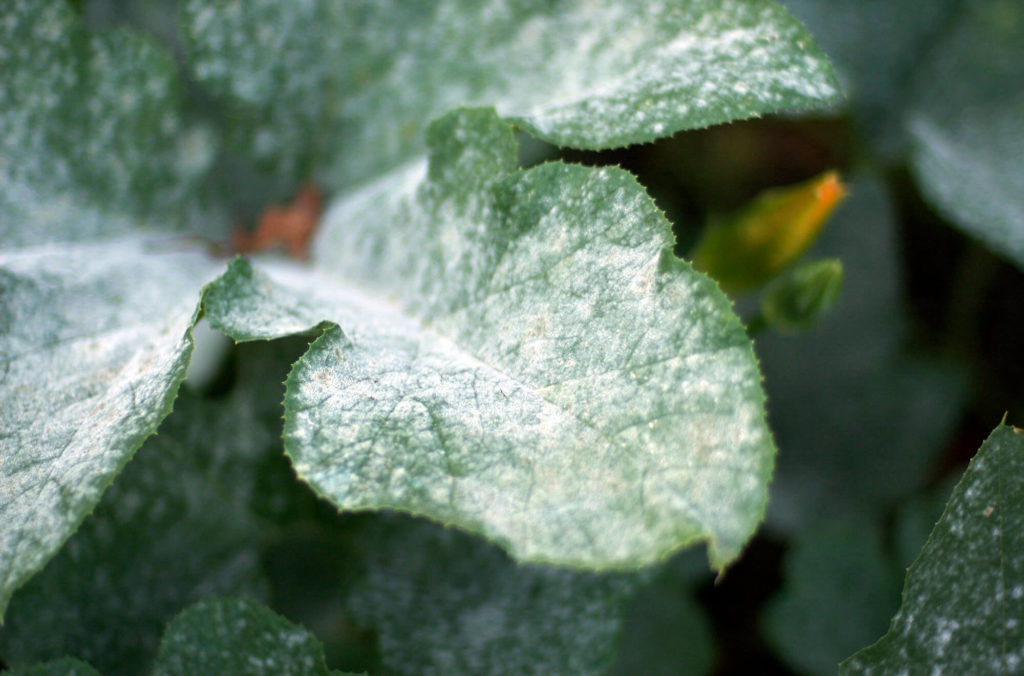
Powdery mildew is a fungal disease that can harm your plants. Over time, it leaches nutrients from the leaves, causing them to yellow and wither and drop. It is highly contagious and can affect any type of plant. It appears white and a little furry or fuzzy. As you can see in this picture, it can look somewhat like the beneficial epicuticular wax. But there are notable differences. Powdery mildew forms gradually, and it tends to start on a single leaf or two, heavily covering those leaves while neighboring leaves have little to none. So it is not evenly distributed over the plant at all. Close inspection shows it to be a bit patchy rather than so even and fine as the wax.
If you are concerned that you have a plant with powdery mildew, it is important to take action. To confirm that this is the problem, if you are unsure, take a leaf to a local nursery to have someone look at it for you. Or ask an experienced gardener, or take a photo and ask others on Facebook gardening forums for confirmation. If you are battling powdery mildew, there are a number of natural and effective remedies. I highly recommend this article as a great starting point for remedies for powdery mildew.
Recognizing Whiteflies on Your Succulents
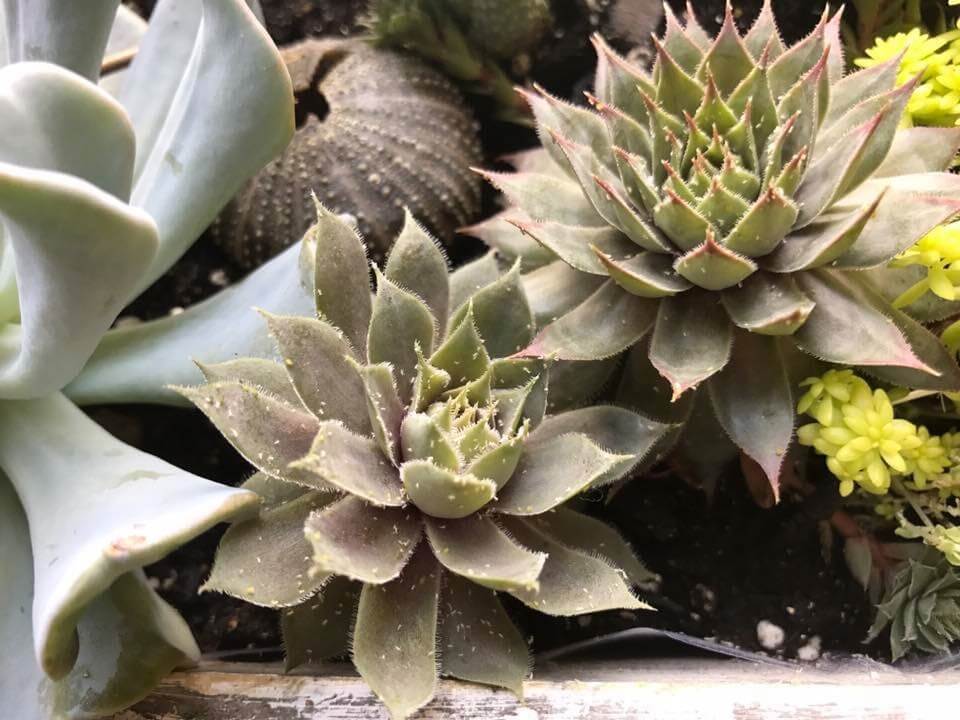
Whiteflies are tiny insects that suck the moisture and nutrients from plants, leaving a sticky residue called honeydew behind. Leaves soon wither and deform with a whitefly infestation. The insects and larvae are all white and sometimes look fluffy or furry when they accumulate. The eggs are a pale yellow when freshly laid and brown when they are ready to hatch. Whiteflies tend to be more active on the bottom of the leaf than on the top. And they do not produce a uniform, even, and superfine coating of the leaf or plant like the epicuticular wax does. The honeydew they produce is sticky, attractive to ants, and a helpful way to determine that the issue you have is whiteflies.
If you are concerned that you have whiteflies but want a second opinion, the local nursery, gardening friend, and Facebook forums will be very helpful. Read more about whiteflies and how to control them here.
My preferred method for both treating a whitefly problem and preventing one from occurring is to use worm castings. Worm castings are essentially worm manure, and they are rich in minerals that make them a wonderful organic fertilizer for succulents. Among many sterling qualities, worm castings are a natural source of chitinase, an enzyme that breaks down the exoskeleton of insects. I incorporate dry worm castings into the soil when I plant a succulent, either in a pot or in the ground. This enables the plant to take in the chitinase through its roots and distribute it throughout the plant. Whiteflies and other pests sense the chitinase and avoid feeding and nesting on those plants. A worm-casting tea can be applied topically as a foliar spray to treat an infestation of insects – and fertilize the plant at the same time.
Thank you, Lindsy Hemmersbach, for the use of this photo!
Recognizing Mealybugs on Succulents
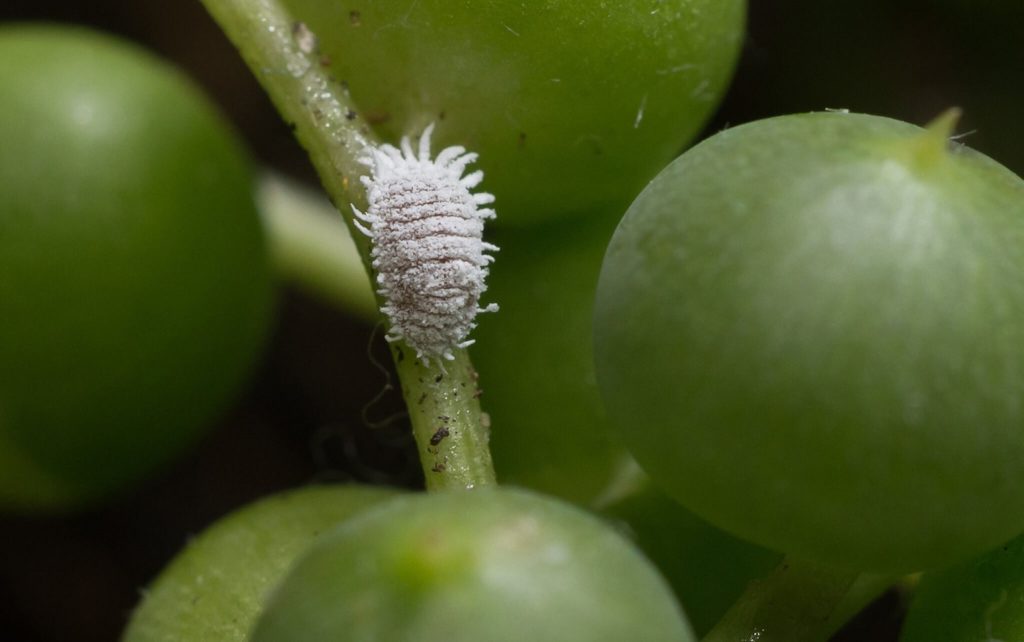
Another example of white stuff on your succulents is the dreaded mealybugs. Usually, the first sign of mealybugs is a fluffy, white mass of cottony-looking stuff on the stems, petioles (the short stem-like structures that attach the leaves to the stem) and the leaves. The fluff generally looks a bit ratty or disorganized and often includes black specks — the insects’ droppings.
Mealybugs are slow-moving, soft-bodied insects related to scale. They feed off the stored moisture in a plant’s leaves, and they just love succulents. While they move slowly, they reproduce rapidly, and an infection can quickly become an infestation. Mealybugs secrete a sweet, sticky substance called honeydew that both attracts ants and feeds and supports sooty mold on your plants.
Like whiteflies, mealybugs are best prevented with worm castings. You can also kill existing mealybugs with a direct spray of isopropyl alcohol (rubbing alcohol). It won’t hurt your succulents if you spray them out of direct sun and leave them protected from the sun for 24 hours. Spray the plant heavily, protected from direct sun, until it is thoroughly dry.
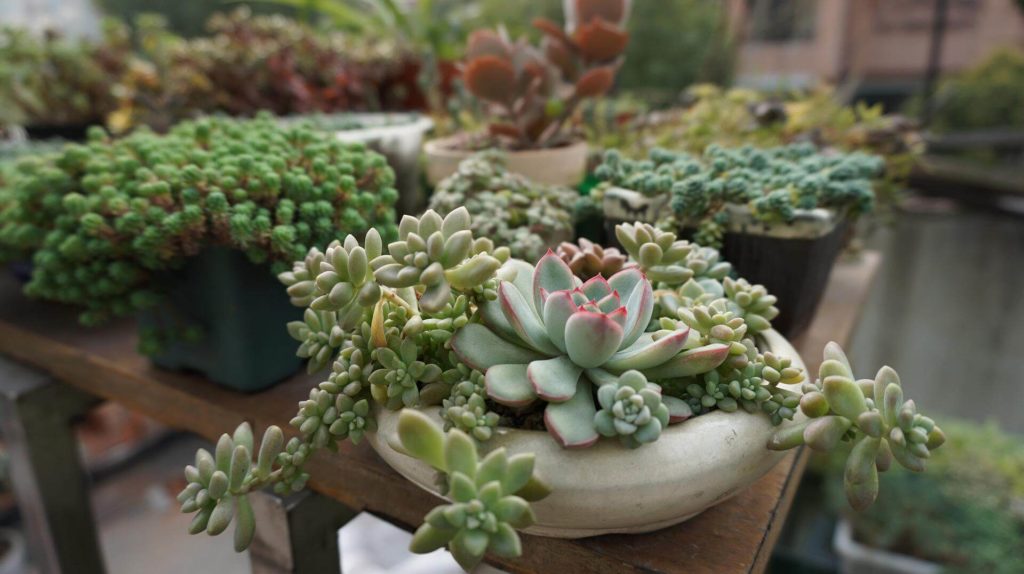
Now you know the purpose of that white film on many of your succulents! It is epicuticular wax, sometimes called farina. Even better, you can better determine if the powdery white you see is friend or foe – a beneficial wax or signs of pathogen or infestation. In general, the wax will be very fine and very evenly distributed on your plant, whereas the powdery mildew and whiteflies will be more patchy in appearance. Good plant hygiene is the best defense against mildew and bugs. And embracing the beauty of glaucous leaves and their waxy coating will help you to enjoy your healthy succulents!
I hope you found this article helpful. Please take a moment to leave a comment if you have any questions, or feel free to send me an email!
Happy Succulent Gardening!

P.S. For more succulent care information, please subscribe! I’ll send you my FREE course, 7 Steps to Succulent Success. Thank you!
P.P.S. Why not join my Facebook Group for succulent lovers? We talk about succulent care, propagation, succulent identification, and design. It’s a warm and welcoming group that would love to meet you!
